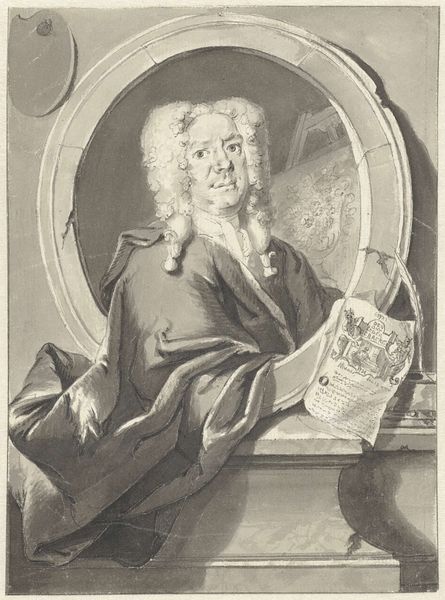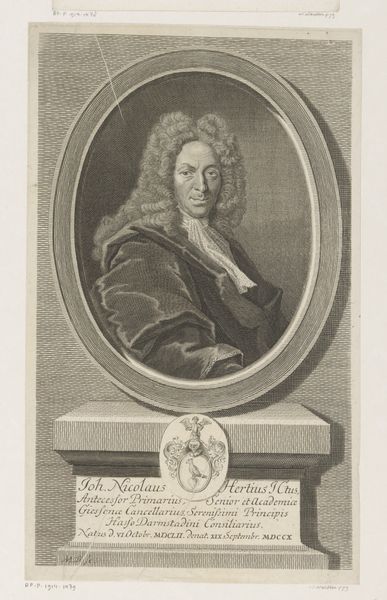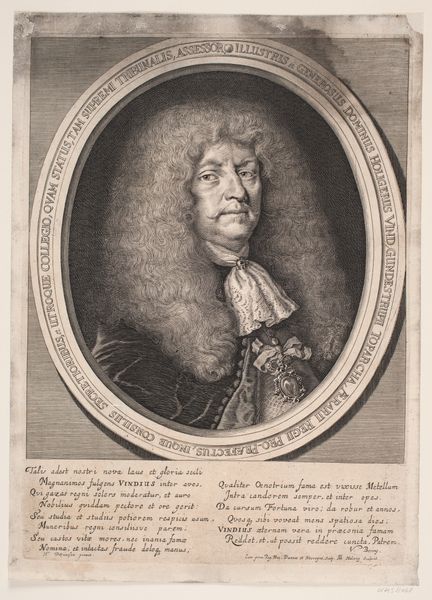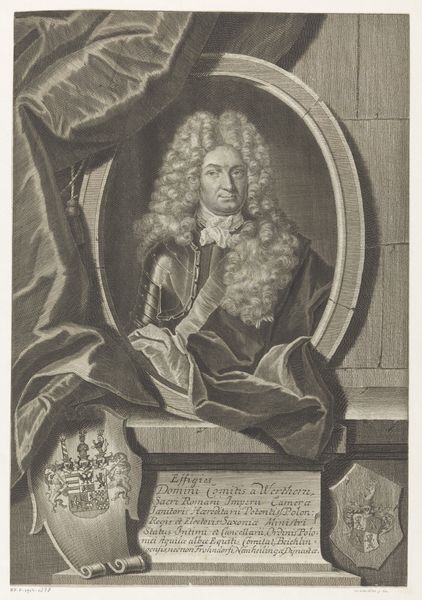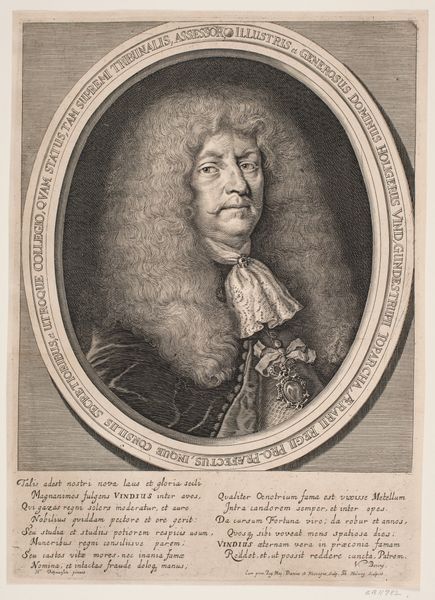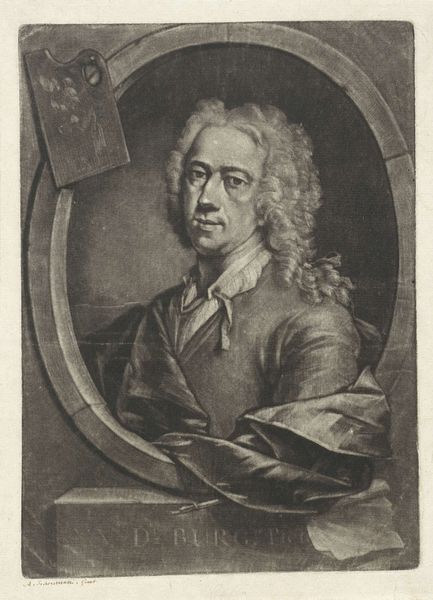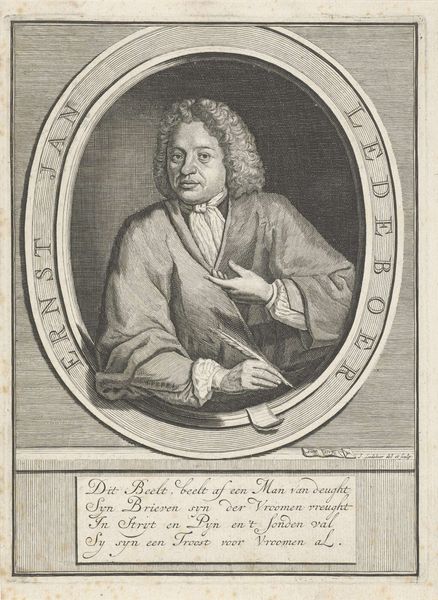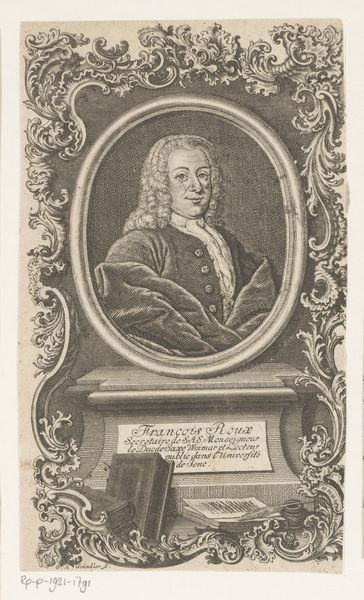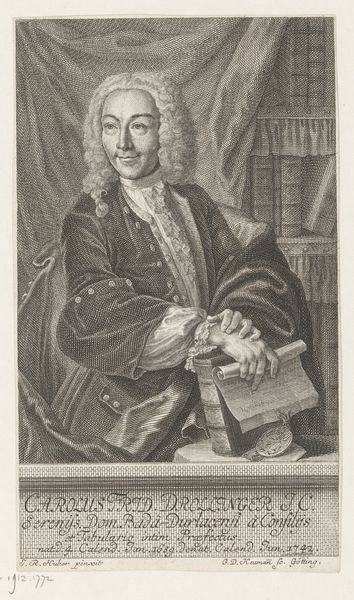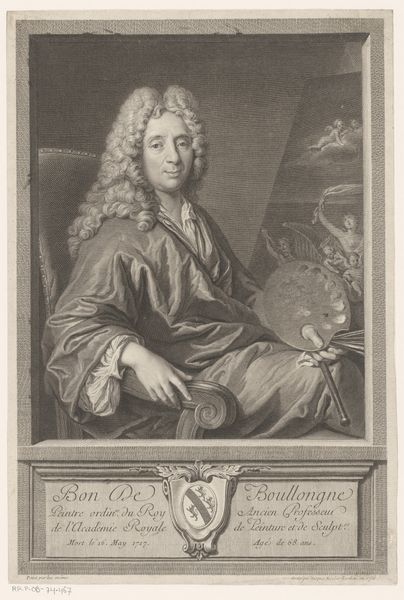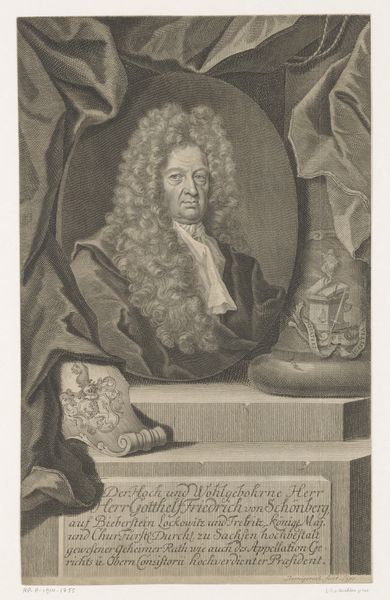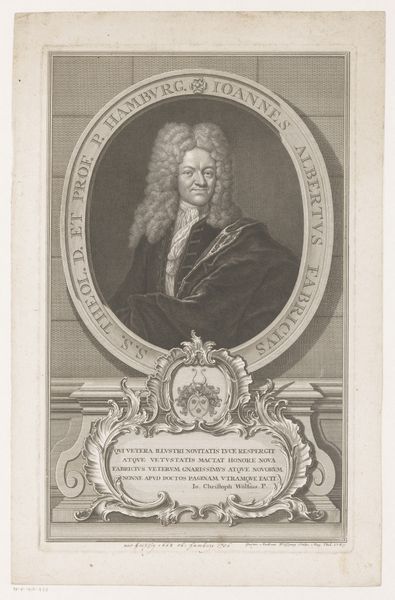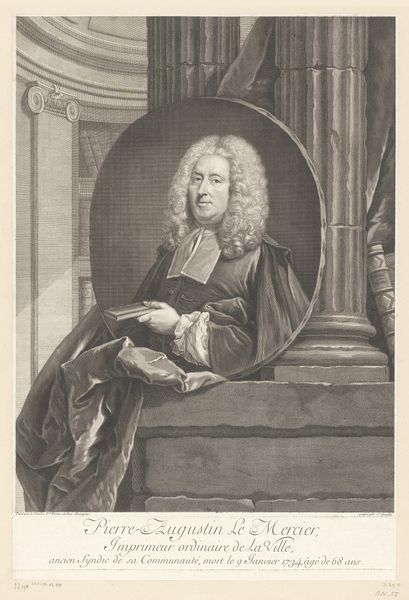
paper, engraving
#
portrait
#
baroque
#
old engraving style
#
paper
#
portrait reference
#
framed image
#
history-painting
#
engraving
Dimensions: height 191 mm, width 148 mm
Copyright: Rijks Museum: Open Domain
Curator: I'm immediately drawn to the texture of this engraving, all those fine lines creating volume and depth. It’s a very evocative use of the medium, quite arresting, actually. Editor: Indeed. We are looking at a work entitled “Portret van Jacob Campo Weyerman” made sometime between 1724 and 1747. It is currently held at the Rijksmuseum, and it's an engraving on paper by Jacob Houbraken. Curator: The sitter’s gaze is rather direct, isn't it? It's framed perfectly within that circular border and all that linear hatching is giving almost a luminous quality to the skin. There's a real tension created by the textures in contrast to the rather flat background. Editor: Weyerman was quite the character, a figure known for his satirical writings and turbulent life. He was often embroiled in controversy, and even served time in prison for libel. I think understanding that context is key to appreciating this portrait; the work is not merely a visual record, but an engagement with ideas around artistic and social critique, power, and, perhaps, accountability. Curator: I see your point, but the technical precision displayed to render such a full head of hair... that must've taken painstaking care! And how those darks converge into rich shadows gives the engraving dramatic heft. Editor: I think those dramatic elements speak directly to the era in which Weyerman lived and wrote; one steeped in the burgeoning ideas of the Enlightenment, and, also, very firm class hierarchies that a writer like Weyerman navigated so problematically. Considering how often history paints people as simple to understand or root for, Weyerman defies easy categorisation, don’t you think? Curator: You're right; perhaps the density is what communicates complexity! The light and shadow performing not just representation but embodying those social contradictions, that interiority. Editor: Exactly! The artist has situated the man so well, allowing his character and his context to intertwine in the work itself. This goes beyond mere illustration; it’s social commentary. Curator: Well, however we approach it, it seems the engraving offers layers of insight— both in its formal composition and its contextual depth. Editor: Indeed. It is one that continues to engage our thinking about identity and art's place in socio-historical dialogue.
Comments
No comments
Be the first to comment and join the conversation on the ultimate creative platform.
